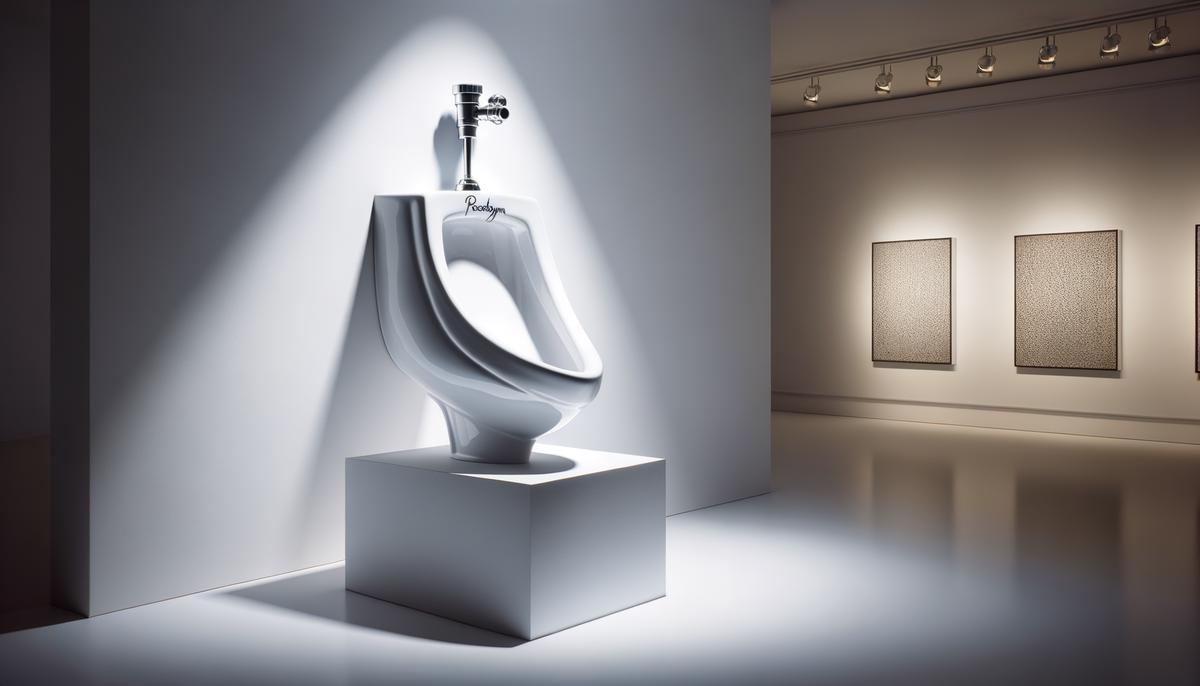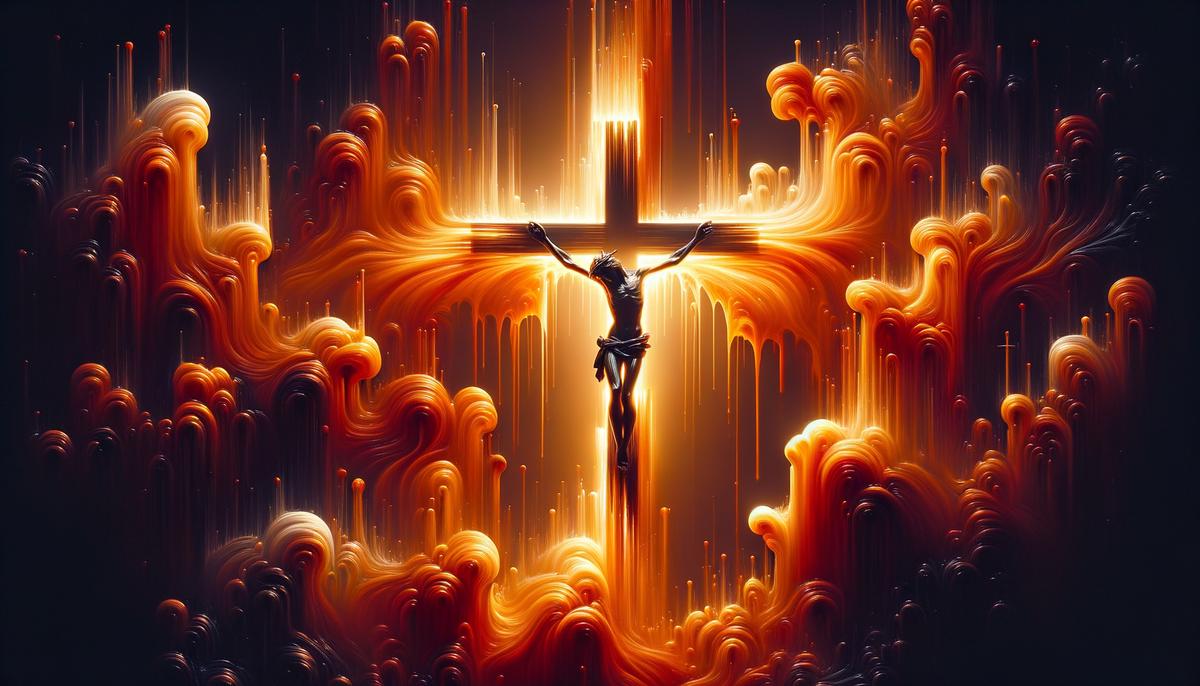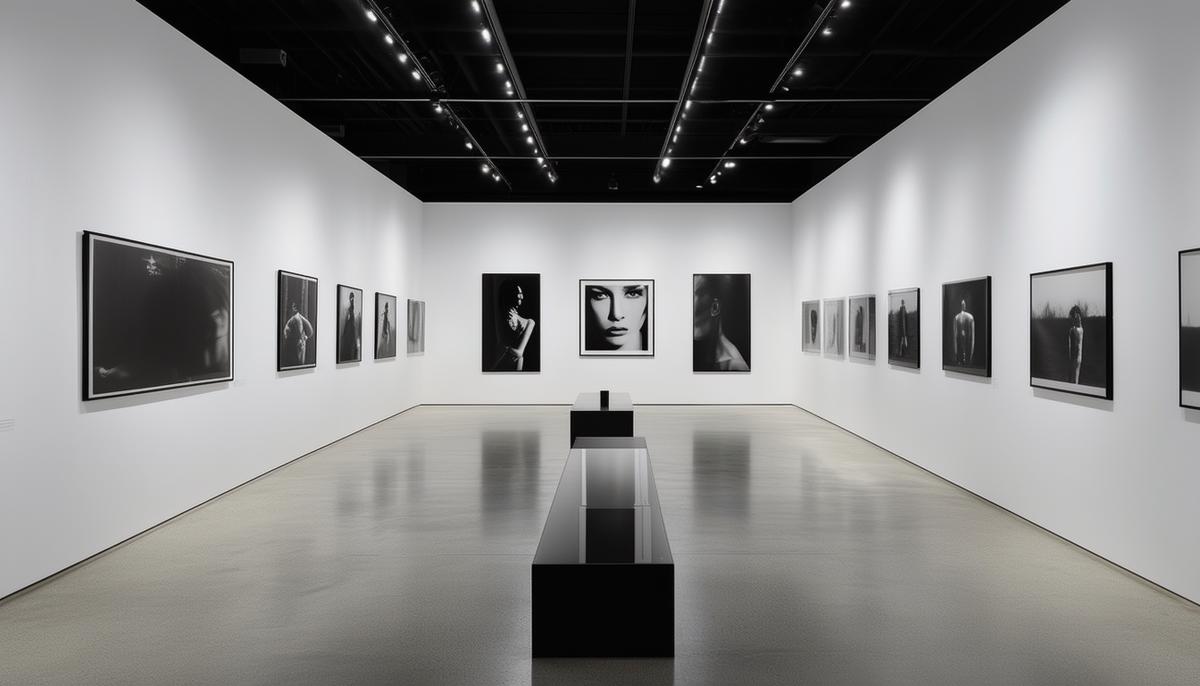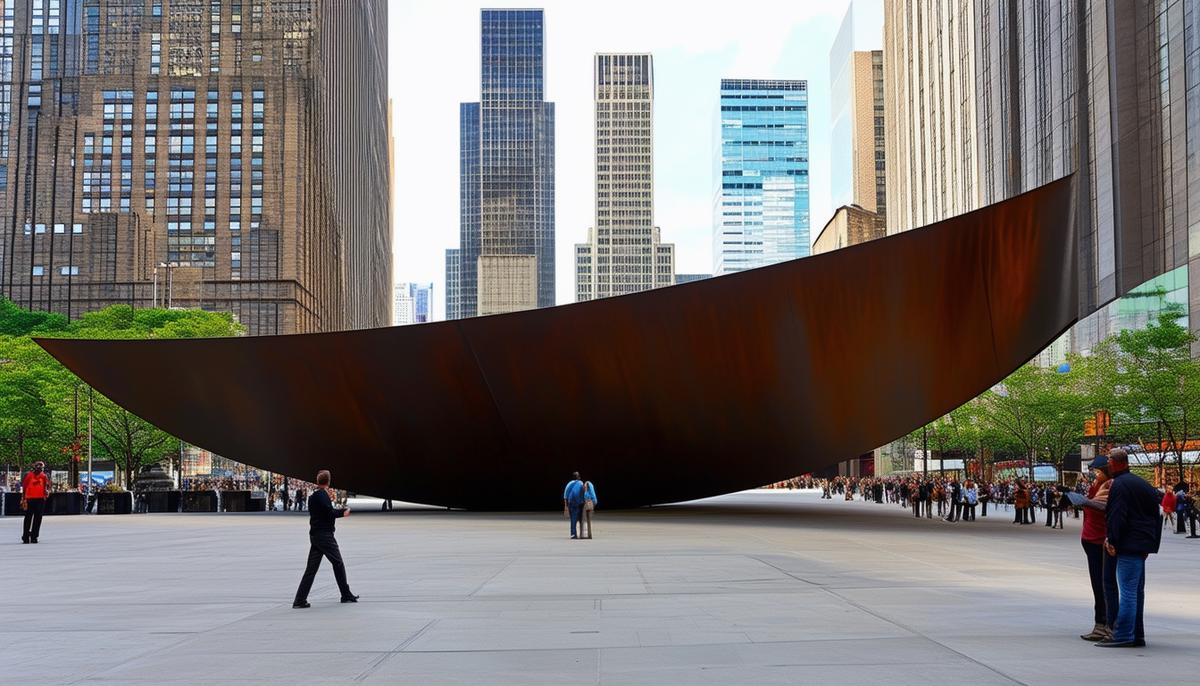Historical Context of Controversial Art
Marcel Duchamp's 'Fountain', a urinal turned art piece, shifted the landscape of the art world in 1917. Initially rejected by the Society of Independent Artists, Duchamp confronted conventional aesthetics, questioning the nature of art and triggering debates about what constitutes art.
Andres Serrano's 'Piss Christ' spoke about the dichotomy between sacred imagery and profane materials. The 1987 photograph, depicting a crucifix submerged in Serrano's urine, ignited a firestorm for its perceived blasphemy, centering on the artwork's implications about religious symbols in modern society and discussions regarding freedom of expression versus sacred values.1
Chris Ofili's 'The Holy Virgin Mary' in 1996, with elephant dung and collaged pornography cutouts, questioned racial and religious stereotypes. It encouraged dialogue about racial identity in religious iconography, eliciting discourses on perception and respect of religious figures.
Ai Weiwei's 'Dropping a Han Dynasty Urn' challenges socio-political norms, encapsulating the struggle against traditionalism and driving the conversation about cultural heritage versus contemporary art. This piece faced backlash due to its defiance and destruction of ancient artifacts, alluding to broader forms of political rebellion against cultural conservatism.
Picasso's 'Guernica' voices the uproar against anti-war sentiments. Utilizing distortion and fragmentation, 'Guernica' challenged spectators' views about media portrayal and emotional narratives surrounding war, urging a diverse dialogue.
These artworks engage with societal fabrics, refuting or embracing elements to convey truths or nascent philosophies. They mold perceptions, unearthing reactionary layers within societies and immortalizing disputes and recognitions within enduring dialogues.

Artist Intentions vs Public Reception
Andres Serrano's 'Piss Christ' exemplifies the disjunction between artist intentions and public reception. Serrano, with a background in art and religion, intended the work as a commentary on the commercialization of Christian symbols. However, the artwork was met with vehemence from religious communities and the public, who interpreted it as a desecration of faith. The subsequent furor underscored the interplay between an artist's rationale and the public's literal interpretation.
Similarly, Chris Ofili's 'The Holy Virgin Mary' created a juxtaposition between sacred iconography and modern elements. Utilizing unconventional materials to depict a holy Christian figure, the artist intended to merge racial identity and cultural reverence. The public's reaction was polarized; some applauded Ofili, while others perceived the elements as disrespectful or blasphemous.
These cases illustrate the tension between intent and reception, shaped by personal beliefs, cultural momenta, and societal norms. The gap between them serves as a ground for debate about the artwork and broader issues including freedom of expression and cultural reverence.
Examining such cases, we grapple with the complexities art faces in dialogues where reverence and shock interlace. The artistic journey opens new windows beyond conventional landscapes and casts shadows where light remains obstructed by cultural edifices. Engaging with these considerations enriches our interpretive avenues and fosters a nuanced relationship between society and art, sparking significant conversations and attesting to art's role in challenging attitudes while broadcasting questions into the communal sphere.

Impact of Controversy on Art's Value
Robert Mapplethorpe's intimate photography, exploring the human body and BDSM subculture, represents how controversy can enhance the cultural and monetary value of art. His works, often considered provocative, engage with themes of intimacy, identity, and eroticism. The cultural pushback magnified Mapplethorpe's significance. His 1989 exhibition "The Perfect Moment" sparked a national debate about public funding for the arts, boosting his recognition. His photographs gained increased value both monetarily and historically.2
The 'Myra' painting by Marcus Harvey, reimagining the mugshot of child murderer Myra Hindley using children's handprints, questions the intersection of morality, media consumption, and art's role in public spaces. Exhibited in the 1997 'Sensation' show, it ignited outrage for seeming to trivialize Hindley's crimes. Yet, this controversy catapulted Harvey into the public spotlight, laying the groundwork for discussions about artistic freedom and responsibilities of public institutions in art curation. It increased the painting's cultural relevance and perceived importance.
These examples elaborate on a paradox: controversy can expose artwork to wider audiences, inflating its market worth, but can also result in censorship attempts or backlashes. While controversy might dim individual receptivity, it often enhances the artwork's dialogue with societal issues, leading to a denser cultural footprint.
Mapplethorpe's and Harvey's works present discomforting yet necessary societal introspections, leveraging art as a vessel for aesthetic experience and a crucial informant to public debates within modern scapes. These pieces engage histories, communities, and generations in ongoing dialogues that challenge norms and prompt re-evaluation of what is deemed culturally precious or taboo.
Thus, even contentious art continues to ornament galleries and collections, bearing witness to humanity's fascination with that which shakes us from complacency. It bespeaks an enduring appreciation for how art disrupts, dialogues, and details lives in strokes that bind us emotionally, challenge intellectually, and provoke indefinitely.

Role of Institutions in Art Controversies
Public institutions like galleries, museums, and funding bodies play a crucial role in shaping the narrative and reception of contemporary art, particularly when controversies arise. Their authority and choice of inclusion or exclusion of artworks can dictate the bounds of public discourse.
The cancellation of Robert Mapplethorpe's "The Perfect Moment" exhibition at the Corcoran Gallery of Art in 1989 is a telling example. Originally scheduled to display Mapplethorpe's explicitly sexual photographs, the show was abruptly cancelled amidst political pressure and public backlash. This decision sparked a debate about the criteria used by institutions to determine the appropriateness of artworks and the measure to which public funds should support the arts. Ironically, the controversy brought Mapplethorpe wider recognition.
When the "Sensation" exhibition at the Royal Academy of Art featured works like Marcus Harvey's "Myra" and Chris Ofili's "The Holy Virgin Mary", both artworks drew drastic responses. The Academy decided to continue showcasing the exhibition despite significant protests. This stance highlighted the vital role institutions play in defending artistic expression.
It's imperative to acknowledge that while galleries and museums sometimes take bold stances, these organizations operate within a society whose members can leverage various forms of power to affect what is shown. Public reaction can scale financial pressures or political and social influence that may sway institutional decision-making.
The dynamics speak to a delicate balancing act institutions must perform. They are tasked with preserving artistic integrity while navigating potential minefields of discontent. Institutions can either act as gatekeepers of norms or champion provocateurs challenging taboos.
The epilogue of every controversial art piece is tied to the stance and actions of the institutions that house them. Their role as catalysts, upholding works rich in provocation, can set the stage for broader cultural dialogues, reshaping societal perspectives on art and freedom of expression. Through this, galleries and museums secure a legacy about fostering artistic dissent and curating aesthetic placidity, fulfilling a critical role in a vibrant, changing cultural landscape where art remains a potent catalyst for dialogue and transformation.
Legal and Ethical Challenges
Richard Serra's 'Tilted Arc,' a curved steel sculpture commissioned for the Federal Plaza in New York City, catalyzed a legal debate in the realm of public art. The installation became a flashpoint of controversy upon its unveiling in 1981. Employees complained that the arc obstructed pedestrian traffic and tarnished the plaza's aesthetic. The discontent led to a public hearing in 1985, where art's right to exist in a communal space was subjected to civic referendum. The decision to dismantle and remove 'Tilted Arc' testified to community consent weighing over the principles of artistic integrity espoused by Serra. This case set a precedent for public art intervention by legal and civic authorities, spotlighting the negotiations between artistic expression and public utility.3
Andres Serrano's 'Piss Christ' threw into relief confrontations between artistic freedom and legal restrictions. When the photograph of a crucifix submerged in urine was exhibited, it lit a fuse across sectors of the American public and legislature. This incitement burgeoned into an uproar for stripping public funding from works deemed offensive. Beyond reproach, Serrano's piece underwent acts of vandalism and was repeatedly the subject of legal threats aimed at curtailing its exhibition. Despite excessive protestation, 'Piss Christ' mirrored the protected voice under the First Amendment.1
These legal scrutations serve as reminders of the ethical conundrums embedded within the reception of controversial art. Where ought one draw the boundary between freedom of expression and public sensibility? How does society negotiate admissibility when art extends into provocative or offensive domains? Each lawsuit or legal threat posed against artworks embroiders the ongoing tapestry of discourse that challenges both jurists and artists to reflect on constitutional implications and moral responsibilities.
These confrontations ripple outward as dialectics on societal values, governance, and aesthetics of the shared world. Such legal engagements underscore the enduring potency of art: its power to challenge ethics, provoke regulatory critique, and stretch the constitution's girth. Controversial art perseveres as invocative, asking its audience—what ought to be the measure of our cultural span, the scope of our expressive liberty?

In the realm of controversial art, the dialogue between creation and reception is a dynamic confrontation that shapes cultural discourse. Through these engagements, art maintains its vital role as a catalyst for societal reflection and transformation. The enduring relevance of these artworks lies in their ability to challenge existing norms and engage communities in meaningful dialogue about the values and boundaries of expression.
- Barstow D. Andres Serrano: Piss Christ. Arts Law. 2001;6(1):106-115.
- Mercer K. Mapplethorpe and the Flower of Evil. Art, Activism and Oppositionality: Essays from Afterimage. 1998:159-177.
- Kelly M. Public Art Controversy: The Serra and Lin Cases. The Journal of Aesthetics and Art Criticism. 1996;54(1):15-22.























